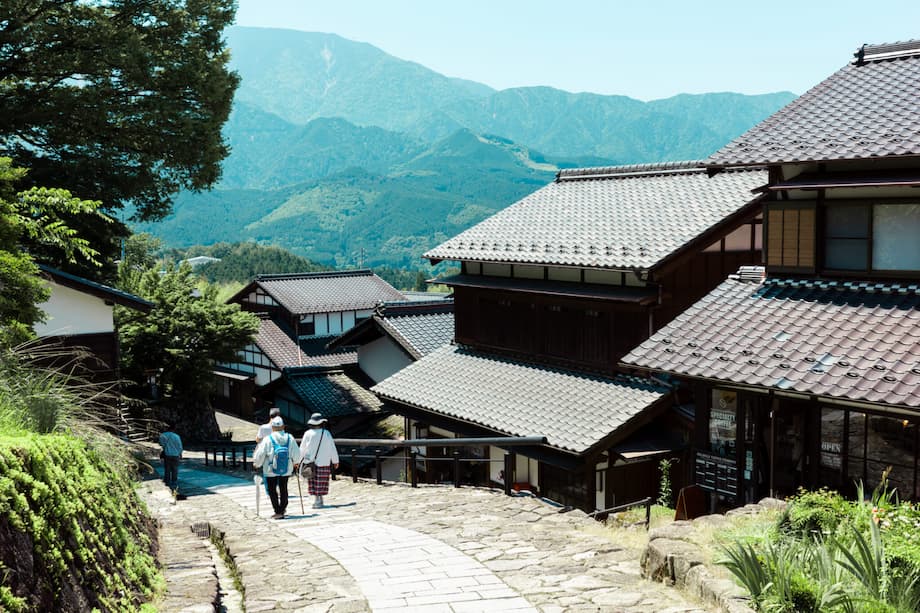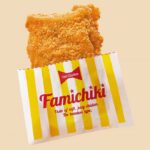Why look beyond Tokyo, Kyoto and Osaka
For many first time visitors, the big three cities set the pace of a Japan trip. Crowds have surged to record levels since borders reopened, with more than 3 million arrivals in a single month in early 2024. That has strained famous districts and icons, from Kyoto’s Gion lanes to Mount Fuji viewpoints, and prompted new measures such as visitor caps, higher fees at certain sites and crowd control barriers. Travelers are being encouraged to spread out and explore less visited regions.
- Why look beyond Tokyo, Kyoto and Osaka
- How the Japan Rail Pass works in 2025
- A 14 day west Japan loop, four standout stops
- Magome juku, Gifu, and the Nakasendo spirit
- Himeji, Hyogo, and the White Heron Castle
- Kochi, Shikoku, and the craft of Tosa steel
- Kagoshima City, Kyushu, with Sakurajima on the horizon
- Smart crowd avoidance for rail travelers
- Seats, luggage and station know how
- Cost and planning benefits
- The Essentials
Japan’s rail network makes that shift simple. High speed shinkansen lines link major hubs, while limited express and local trains weave into castle towns, Edo era post towns, coastal cities and volcanic bays. With the Japan Rail Pass, you can string together long journeys on one ticket, reserve seats ahead of time, and reach places that feel calm, authentic and rich with local food, craft and history.
How the Japan Rail Pass works in 2025
The Japan Rail Pass is a nationwide ticket for foreign tourists and some eligible Japanese nationals living abroad. It grants unlimited rides on most JR operated trains for 7, 14 or 21 consecutive calendar days. Coverage includes shinkansen bullet trains, limited express, rapid and local lines, plus the Tokyo Monorail to Haneda and selected JR ferries and buses. The fastest Nozomi and Mizuho shinkansen are not included by default, but pass holders can ride them with a separate upgrade ticket.
Two classes are available. Ordinary cars suit most travelers with generous legroom and reclining seats. Green cars provide wider seats, extra space and a quieter atmosphere. Current adult prices on the official site are about 50,000 yen for 7 days, 80,000 yen for 14 days and 100,000 yen for 21 days in Ordinary. Green Car prices are 70,000 yen for 7 days, 110,000 yen for 14 days and 140,000 yen for 21 days. Seat reservations are free for pass holders, and you can often book seats online up to one month ahead. Oversize luggage space on the Tokaido, Sanyo and Kyushu shinkansen can be reserved together with your seat when your suitcase exceeds standard dimensions.
A 14 day west Japan loop, four standout stops
With the pass in hand, a two week loop through western and central Japan delivers diverse scenery and culture without the crush. The route below connects mountain paths, a UNESCO listed castle, Pacific coast craft and cuisine, and a subtropical bay city in Kyushu. You can start in Tokyo or Nagoya, and travel clockwise to keep transfers simple.
- Magome juku in Gifu, an Edo era post town on the historic Nakasendo trail, with a forest walk to Tsumago and rustic snacks like gohei mochi.
- Himeji in Hyogo, home to Himeji Castle, nicknamed White Heron Castle for its sweeping white silhouette, plus temple quiet on Mount Shosha.
- Kochi on Shikoku, reached via the Seto Ohashi Bridge, with hand forged Tosa knives at the centuries old Sunday market and katsuo no tataki seared over straw.
- Kagoshima City in Kyushu, set across the bay from active Sakurajima volcano, with the grand Sengan en garden and premium black wagyu steaks.
The train legs are scenic throughout, passing coastlines, rivers, rice fields and mountain corridors. Reservations help you secure window seats on popular departures, and luggage delivery services lighten the load during station transfers.
Magome juku, Gifu, and the Nakasendo spirit
Tucked in the forested hills above Nakatsugawa in Gifu Prefecture, Magome juku feels like a step back in time. Once a post town on the Nakasendo, the Edo period route between Edo and Kyoto, it still shows cobblestone lanes, waterwheels and wooden facades with lattice windows. The uphill main street opens to views of the Central Alps, and the sounds of running water add to the quiet mood.
What to see and taste
Visit the Toson Memorial Museum to learn about Shimazaki Toson, the Meiji era writer born here, and the Magome Waki Honjin Museum for artifacts that trace the town’s role as a rest stop for lords and travelers. Many visitors walk the Magome to Tsumago section of the Nakasendo, a gentle 8 kilometer stretch through forest, streams and rural hamlets. Wayfinding signs and bear bells line the path, and the walk takes two to three hours at a relaxed pace.
Refuel with gohei mochi, a skewered rice cake brushed with a sweet savory miso sauce. Local lore links it to woodcutters and mountain workers who needed energy rich food. Cafes along the slope serve it freshly grilled, along with soba, seasonal sweets and mountain vegetables.
How to get there with the pass
From Tokyo, take the JR Chuo Line Limited Express to Nakatsugawa Station. From Nagoya, the JR Chuo Main Line local or rapid trains reach Nakatsugawa in about one hour. A short bus ride connects the station to Magome. The route is covered by the pass. If you plan to hike to Tsumago, you can bus back or return by local taxi. Start early to enjoy the trail with fewer hikers, and pack water and rainwear in changeable weather.
Himeji, Hyogo, and the White Heron Castle
Himeji Castle was among Japan’s first UNESCO World Heritage listings in 1993 and embodies classic Japanese castle design. Its white plastered walls and layered roofs recall a bird in flight, which led to the White Heron nickname. The complex is extensive, with baileys, gates and winding defensive paths that slow any approach. The interior retains original wood and steep stairways, and seasonal views from the top floors stretch across the city and surrounding hills.
Beyond the keep
Next door, Koko en Garden features nine different garden styles arranged around ponds and tea houses, a perfect counterpoint to the castle’s fortifications. For a quieter cultural escape, ride the ropeway up to Mount Shosha for Engyoji Temple. The temple precincts, featured in film and television, host meditation sessions and sutra copying on select days and sit in deep forest with wide verandas and wooden halls.
Himeji makes a fine food stop too. Try akashiyaki from nearby Akashi, a light octopus dumpling made with an egg rich batter, and dip it into dashi stock rather than covering it with sauce.
How to get there with the pass
From Shin Osaka, JR Sakura or Hikari trains on the Sanyo route reach Himeji in about 30 minutes. Nozomi trains are the fastest but require an extra upgrade ticket with the pass. Himeji Castle is a straight walk from the station along a broad avenue. Arrive for the morning opening bell to enjoy the main keep with the least crowding, then retreat to Koko en when bus tours begin to arrive late morning.
Kochi, Shikoku, and the craft of Tosa steel
Kochi sits on the Pacific coast of Shikoku, known for mountains, rivers and a slower pace. The journey itself is a highlight. Trains from Okayama cross the Seto Ohashi Bridge, a chain of spans over the Seto Inland Sea with island views on both sides. The final stretch into Kochi runs alongside rivers and forested hills.
Markets, castles and caves
Kochi’s Sunday Market has run for more than 300 years along Otesuji Avenue, with vendors selling farm produce, street food and Tosa forged knives known as Tosa uchihamono. Artisans free forge blades by hand, a method that descends from swordmaking. The knives are sold in a range of steels and shapes, often with rustic handles, and merchants offer guidance on sharpening and care.
Kochi Castle is one of the few castles with its original keep and main gate intact, and the timber interior shows how feudal lords lived and worked. For nature, head to Ryugado Cave in nearby Kami. This large limestone cave winds through chambers with stalactites and underground streams.
What to eat and when
Kochi is famous for katsuo no tataki, thick slices of bonito seared over burning straw, known locally as warayaki. The outside is lightly charred and the interior remains sashimi tender, served with salt, vinegar, citrus, garlic and herbs. Bonito is at its best in early summer and late fall. Many izakaya let you watch the searing up close.
How to get there with the pass
From Himeji, travel to Okayama by JR, then board the JR Shikoku Limited Express Nanpu, which crosses the Seto Ohashi to Kochi. Seat reservations are recommended, especially on weekends. Consider a window seat on the right side when leaving Okayama for island views. Summer can bring heavy rain and typhoons, so check forecasts and allow buffer time during that season.
Kagoshima City, Kyushu, with Sakurajima on the horizon
Kagoshima sits on a wide bay facing Sakurajima, one of Japan’s most active volcanoes. The city earned the nickname Naples of the East for its bay views and mild climate. The volcano shapes daily life, from ash forecasts to the mineral rich hot springs across the region. Even a short ferry ride across the bay brings you close to steaming vents and lava fields with walking paths.
Gardens, villas and island views
Sengan en, a grand villa and garden built in the 17th century by the Shimadzu clan, frames Sakurajima as a borrowed landscape across ponds, stone lanterns and seasonal blooms. The grounds include shrines, a bamboo grove and hillside trails. In the city center, museums cover local history, industrial advances and the role of the Satsuma domain in the late Edo period.
Kagoshima is a destination for meat lovers. Kurogyu, or black wagyu from Kagoshima Prefecture, is prized for fine marbling and deep flavor. Many restaurants serve it as steak with simple seasoning to let the beef shine. Local kuro buta pork and shochu distilled spirits made from sweet potatoes round out the menu.
How to get there with the pass
From Kochi, return to Okayama and head west to Hakata in Fukuoka. Transfer to the Kyushu Shinkansen for Kagoshima Chuo. Reserve seats on longer legs to secure windows and power outlets. If ashfall is expected, carry a light mask and eyewear, and check local advisories. Hot spring towns in the region make a relaxing side trip before you turn north again.
Smart crowd avoidance for rail travelers
Thoughtful timing and a few rail habits can keep your journey relaxed even in peak travel months.
- Choose off peak months when possible. May after Golden Week, June before summer holidays, September after the heat breaks, and winter months such as January and February see fewer visitors at most sights.
- Avoid activating the pass at the airport if you will not use it that day. Lines can be long. Activate it at a city station early in the morning.
- Reserve popular shinkansen and limited express trains as soon as your dates are set. Groups should book seats together to ensure adjacent seating.
- Travel early. First departures are quieter, and you arrive ahead of tour buses at major sights.
- For short hops on the Tokaido or Sanyo routes, consider slightly slower Kodama trains, which are often less crowded than the fastest categories.
- Use IC cards for city transport and small purchases. Welcome Suica, Pasmo Passport or Icoca let you tap through gates and skip ticket lines.
- During peak holidays such as Golden Week in late April and early May, Obon in mid August and New Year, book trains 20 to 30 days ahead, expect station congestion, and allow extra time for transfers.
- Pick quieter neighborhoods for bases in big cities. In Tokyo, consider Nihombashi, Marunouchi, Meguro, Ebisu or Ochanomizu. In Kyoto, look near Kyoto Gosho, Gojo dori or the edges of southern Higashiyama.
Seats, luggage and station know how
Seat reservations are free with the pass, and ticket machines in English make the process quick. Many shinkansen cars display electronic signs showing whether they are reserved or non reserved. Some lines require mandatory reservations at certain times, so check when planning.
Luggage is manageable with a plan. Each traveler can bring two pieces, and oversize suitcases must be reserved on shinkansen in the Tokyo Osaka Fukuoka corridor. If you want to roam stations hands free, use coin lockers or send bags with a luggage delivery service to your next hotel. That small cost buys flexibility during transfers and keeps stair climbs stress free.
On board, keep voices low, set phones to silent and place small bags on the overhead rack. Eating is fine on long distance trains. Bento shops in stations, known as ekiben, sell regional specialties tied to the line you are riding.
Cost and planning benefits
The pass pays off most for itineraries with multiple long jumps. A 14 day Ordinary pass priced at about 80,000 yen can cover shinkansen trips from Tokyo to Gifu, Himeji, Okayama, Kochi, Fukuoka and Kagoshima, plus the return north, offering savings against individual fares. Following the west Japan loop outlined here can save more than 60,000 yen in total rail costs compared with buying separate tickets, depending on seat classes and exact routes.
Beyond the math, the pass simplifies travel days. You can pivot to a later train without visiting a ticket office, reroute around weather, and add side trips when a free afternoon opens up. That flexibility, combined with the comfort and punctuality of Japanese trains, is often the strongest reason to choose a pass over point to point tickets.
The Essentials
- The Japan Rail Pass offers unlimited JR travel for 7, 14 or 21 days, with Ordinary and Green Car options. Nozomi and Mizuho require a separate upgrade ticket.
- Record crowds make dispersion valuable. Western and central regions offer calm alternatives reached easily by rail.
- Four standout stops: Magome juku for Edo era streets and the Nakasendo hike, Himeji for its UNESCO listed castle, Kochi for Tosa knives and bonito, Kagoshima for Sengan en and Sakurajima views.
- Access highlights: Chuo Line to Nakatsugawa for Magome, Sanyo shinkansen to Himeji, Nanpu limited express over the Seto Ohashi to Kochi, Kyushu shinkansen to Kagoshima Chuo.
- Best crowd strategy: travel in May, June, September or winter, book seats early, ride early trains, and avoid activating the pass at the airport.
- Luggage tips: reserve oversize space on shinkansen when needed, use delivery services for station freedom.
- A two week loop like this can save more than 60,000 yen in fares and adds the flexibility to change plans on the fly.




